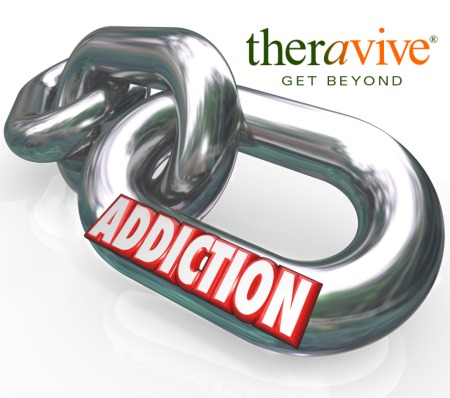 While it is always tragic to hear that a 21 year old is on the verge of losing her life, it is more tragic to hear that horrific history has repeated itself within such a short time in a family. Recent news about Bobbi Kristina Brown, the 21 year old daughter of Whitney Houston and Bobby Brown, being found unconscious in her bathtub resonates with eerie similarity to the news of her mother’s death just 3 years ago in the same fashion. While there are no confirmed reports that drugs or alcohol were involved in Bobbi Kristina’s condition, it is has been widely reported in the media that she has a history of drug abuse. It is a possibility that, similar to her mother’s death, drugs and/or alcohol may have contributed to her drowning. Unfortunately, this story is not one of a kind.
While it is always tragic to hear that a 21 year old is on the verge of losing her life, it is more tragic to hear that horrific history has repeated itself within such a short time in a family. Recent news about Bobbi Kristina Brown, the 21 year old daughter of Whitney Houston and Bobby Brown, being found unconscious in her bathtub resonates with eerie similarity to the news of her mother’s death just 3 years ago in the same fashion. While there are no confirmed reports that drugs or alcohol were involved in Bobbi Kristina’s condition, it is has been widely reported in the media that she has a history of drug abuse. It is a possibility that, similar to her mother’s death, drugs and/or alcohol may have contributed to her drowning. Unfortunately, this story is not one of a kind.
Drug Use Statistics
According to the National Survey on Drug Use and Health (NSDUH) conducted by the Substance Abuse and Mental Health Services Administration (2012), illicit drug use in America has been increasing. In 2012, 23.9 million Americans aged 12 and older reported that they had used an illicit drug or abused a prescription medication in the past month. The survey reported that 2.8 million people used drugs for the first time in 2012, which amounts to 7,898 new users per day. Just over half (52 percent) were under 18. Drug use was reported to be most prevalent among people in their late teens and twenties. In 2012, 23.9 percent of 18-20 year olds reported using an illicit drug in the past month.
The scarier statistics gathered by the National Center for Health Statistics at the Centers for Disease Control and Prevention (CDC) reflect the rate of deaths due to drug overdose. A comparison of the overdose death rates for various drugs between 2001 and 2011 revealed a 3-fold increase in the total number of deaths related to prescription drugs, a 4-fold increase in the number of deaths related to opioid pain medications, a 6-fold increase in the number of deaths related to benzodiazepines (such as Xanax), a 22% increase in the total number of deaths related to cocaine, and a 2-fold increase in the number of deaths related to heroin.
With these kinds of numbers, it is of utmost importance to identify what puts people at risk for this dangerous behavior.
Addiction in Families
Researchers have long since identified a tendency of substance abuse problems to run in families. Goodwin (1979), in a review of the literature on the heredity of alcoholism, noted that hereditability of alcoholism was talked about as far back as Aristotle. Over the past decades, researchers have tried to figure out how much of the tendency to inherit addictive behavior is related to learning by observation (i.e. nurture) and how much is related to the genetic inheritability of addiction (i.e. nature).
While it might seem obvious that a child exposed to adults or older family members engaging in drug use would learn this behavior and be more likely to copy it, the research suggests that this relationship is not that straight-forward. Because it can be so difficult to separate nature and nurture issues in real life, researchers turn to studying twins raised in various environments and adopted children to try to isolate the role of genetics from the role of environment. By studying men who were adopted and raised by non-family members, Cloninger, Bohman & Sigvardsson (1981) identified that rate of alcohol dependence was related to similar behavior in biological but not adoptive parents. A number of studies examined identical and non-identical twins raised in different environments. Since identical twins share most of their genetic code, looking at rates of substance abuse in these children when they are raised in different homes allows inference as to the relative impact of genetics over environment. Several twin studies revealed that 40-60% of the variation in whether the child developed alcohol abuse was explained by genetic factors (Heath, Bucholz, Madden et al. 1997; Prescott & Kendler, 1999; Prescott, Hewitt, Heath et al., 1994).
Based on this information, it is clear that genetics play a significant role. But, it is also clear that genetics are not destiny. Within these studies, many individuals who were genetically predisposed to developing addiction didn’t end up having abuse behavior. There must have been some other characteristics that either predisposed a genetically vulnerable individual to develop addiction or protected a genetically vulnerable individual from developing it.
Legrand, Iacono and McGue (2005) sought to explore the markers that put young people at risk for developing addictive behavior by examining the data collected by the Minnesota Center for Twin Family Research (MCTFR). Based on their analysis, they suggested that addiction may be one of a bundle of behaviors that stem from the same genetic cause. Meaning, a parent can pass on a trait that predisposes their child to a variety of behaviors, one of which is addiction. Legrand, Iacono & McGue use the term “externalizing tendencies” to describe a disposition characterized by hyperactivity, non-conformity, and thrill-seeking behavior. When these tendencies combine with other risk factors, they can lead to addiction or other “acting out” behaviors, including criminal acts or other antisocial tendencies. This research finding is consistent with the idiom often used in treatment settings that “you were an addict long before you picked up your first drug.” In their report, they identified several markers of risk for developing addiction: a personality marked by being impulsive, unruly, easily bored and risk taking; a family background that includes addictive behavior; a reduced amplitude in the P300 brainwave as measured by electrodes placed to register electrical signals from groups of neurons; and a history of experimenting with alcohol and drugs before the age of 15.
These externalizing tendencies can equally be expressed in positive ways, leading people to be outgoing, uninhibited sensation-seekers and becoming firefighters, rescue workers, test pilots, surgeons or business people. In short, genetics is not destiny. A parent can pass on a predisposition to certain behavior but how the child manifests that disposition depends on the child and the environment. The inherited trait determines where a person begins on the continuum of vulnerability to develop the problem. From there, other psychosocial and/or environmental factors, such as peer example or poor parent-child relationships, can push the person along the continuum further towards a disease.
As technology and research innovation in the field of genetics increases our ability to understand and study DNA on the molecular level, we continue to learn more and more about the interaction of environment and genetics. Researchers are now studying how environmental stressors, such as early life stress, child maltreatment, major life trauma, and negative emotional experiences can change the body at the biomolecular level. For example, Sinha (2009) talks about how genetic variations in serotonin transporter gene can interact with early life stress resulting in an increased sensitivity to stressors that lowers serotonin effectiveness and increases vulnerability to psychiatric disorders such as depression. Similarly, other studies are beginning to point to the mechanism by which environmental factors can create biomolecular changes in the reward pathways of the brain that affect the reinforcing of addictive behavior (Goldman, Oroszi & Ducci, 2005; Sinha, 2008). Simply put, exposure to the stress caused by having addiction in the family not only sets a bad learning example and passes down genetic vulnerability, but may actually change the way a child’s brain and body works.
It is Complex...
The overall message from the research seems to be that the development of addiction is a complex interaction between biology and environment. As with any health condition, the more risk factors an individual has for developing a problem, the more there needs to be an awareness of the need for protective/prevention based behaviors and for identification of early warning signs of a problem. When it comes to addiction that could mean choosing abstinence in the presence of strong family history, finding positive outlets for externalizing characteristics and willingness for early intervention. The NSDUH data (2012) confirmed what most addiction professionals know. There continues to be a large “treatment” gap in those with addiction problems. In 2012, an estimated 23.1 million Americans (8.9%) needed treatment for a drug/alcohol problem but only 2.5 million (1%) received treatment at a specialty facility.
References
Cloninger, C., Bohman, M., & Sigvardsson, S. (1981). Inheritance of Alcohol Abuse: Cross-Fostering Analysis of Adopted Men. Archives of General Psychiatry, 38, 861-868.
DrugFacts: Nationwide Trends. (n.d.). Retrieved February 6, 2015, from http://www.drugabuse.gov/publications/drugfacts/nationwide-trends
Goldman, D., Oroszi, G., & Ducci, F. (2005). The genetics of addictions: Uncovering the genes. Nature Rev Genet, 6, 521-532.
Goodwin, D. (1979). Alcoholism and Heredity: A Review and Hypothesis. Archives of General Psychiatry, 57-61.
Heath, A., Bucholz, K., Madden, P., Dinwiddie, S., Slutske, W., Bierut, L., et al. (1997). Genetic and environmental contributions to alcohol dependence risk in a national twin sample: Consistency of findings in women and men. Psychological Medicine, 27, 1381-1396.
Legrand, L., Iacono, W., & Mcgue, M. (2005). Predicting Addiction. American Scientist, 93(2), 140-145.
Overdose Death Rates. (n.d.). Retrieved February 6, 2015, from http://www.drugabuse.gov/related-topics/trends-statistics/overdose-death-rates
Prescott, C., Hewitt, J., Heath, A., Truett, K., Neale, M., & Eaves, L. (1994). Environmental and genetic influences on alcohol use in a volunteer sample of older twins. J Study Alcohol, 55, 18-33.
Prescott, C., & Kendler, K. (1999). Genetic and environmental contributions to alcohol abuse and dependence in a population-based sample of male twins. American Journal of Psychiatry, 156, 34-40.
Sinha, R. (2008). Chronic Stress, Drug Use, And Vulnerability To Addiction. Annals of the New York Academy of Sciences, 1141, 105-130.
Sinha, R. (2009). Stress and Addiction: A Dynamic Interplay of Genes, Environment, and Drug Intake. Biological Psychiatry, 66(2), 100-101.
About the Author

Dr. Irina Kerzhnerman
, PhDDr. Irina Kerzhnerman is a licensed clinical psychologist with offices in Coral Springs and Boca Raton, Florida. With over 18 years experience, she has been trained to understand the relationship between the body and mind and to help people maximize their overall health. Dr. Kerzhnerman has worked with a variety of people from all walks of life and with all sorts of concerns. She has spent many years helping people figure out what is holding them back from having the life they want.
Office Location:
1725 North University Drive
Coral Springs, Florida
33071
United States
Phone: (954) 227-2700 ext. 409
Contact Dr. Irina Kerzhnerman
Professional Website:
www.drireneonline.com